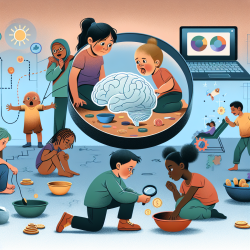Introduction
As practitioners dedicated to improving children's outcomes, it's crucial to consider the multifaceted nature of material hardship and its impact on child development. Recent research, "Poverty, Material Hardship, and Children’s Outcomes: A Nuanced Understanding of Material Hardship in Childhood," sheds light on how different types of material hardship affect children's cognitive and behavioral outcomes. By understanding these distinctions, we can tailor our interventions more effectively.
Understanding Material Hardship
The study identifies four distinct types of material hardship:
- Basic Expense Hardship
- Food Insecurity
- Housing Hardship
- Medical Hardship
These hardships, while related, have unique impacts on children's development. For instance, basic expense hardship and food insecurity are more reflective of short-term economic shocks, whereas housing hardship stems from long-term economic constraints. Recognizing these differences is essential for practitioners aiming to support children effectively.
Impact on Children's Outcomes
The research highlights that material hardship is more prevalent than income poverty and has distinct associations with children's outcomes. Notably, basic expense hardship and food insecurity are linked to increased behavioral problems, while housing hardship is associated with lower math and reading scores. This indicates that interventions need to be diversified to address the specific types of hardship children face.
Implications for Practitioners
For practitioners, this research underscores the importance of assessing the specific types of material hardship a child may be experiencing. By doing so, interventions can be more targeted and effective. Here are some practical steps practitioners can take:
- Conduct comprehensive assessments to identify the types of material hardship affecting a child.
- Collaborate with families to understand their unique challenges and resources.
- Advocate for policies that address both short-term and long-term economic vulnerabilities.
- Utilize data-driven approaches to tailor interventions that address specific hardships.
Encouraging Further Research
While this study provides valuable insights, there is a need for further research to explore the mechanisms linking different types of material hardship to children's outcomes. Practitioners are encouraged to engage in research initiatives that can deepen our understanding and improve intervention strategies.
Conclusion
By recognizing the nuanced impacts of material hardship, practitioners can better support children in overcoming these challenges. Tailored interventions that address specific types of hardship can lead to improved cognitive and behavioral outcomes for children.
To read the original research paper, please follow this link: Poverty, Material Hardship, and Children’s Outcomes: A Nuanced Understanding of Material Hardship in Childhood.










